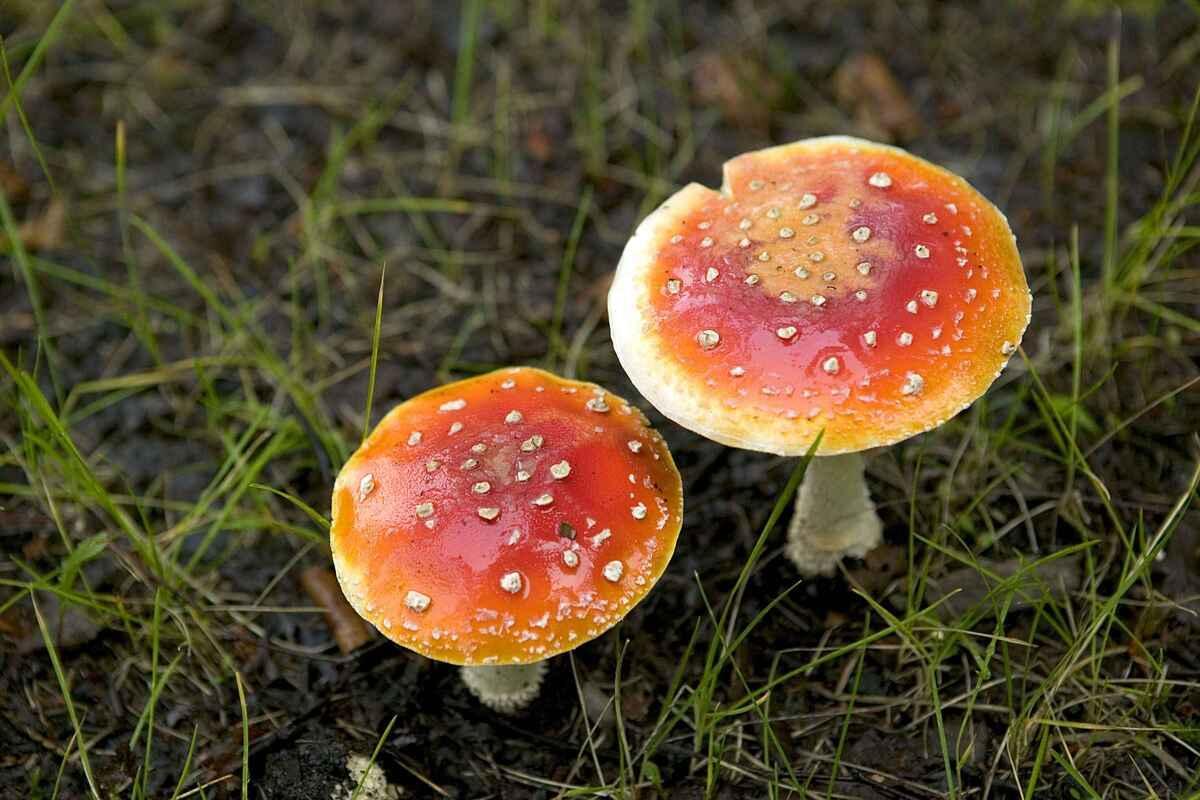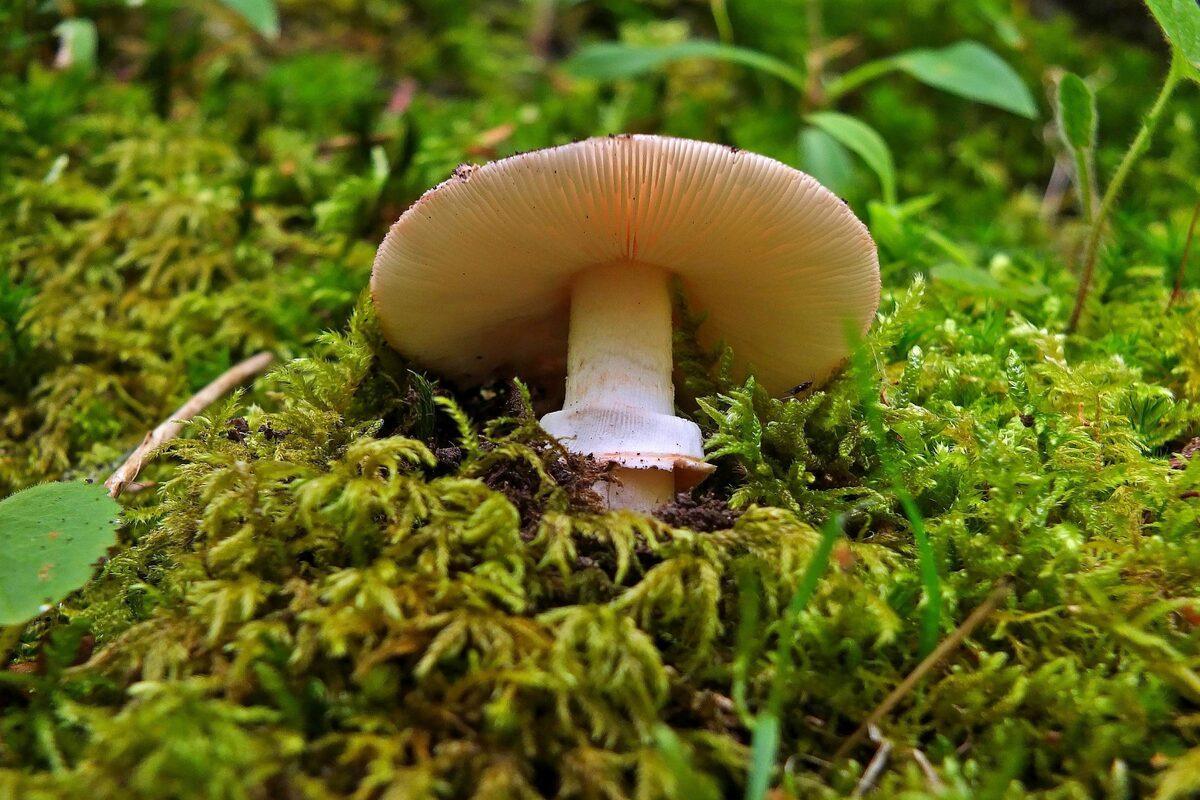What Are Basidiomycetes Fungi?


Basidiomycetes, commonly known as basidiomycota, are a diverse and fascinating group of fungi that encompass a wide range of familiar and well-known species. In fact, basidiomycetes represent the largest and most diverse division of fungi, accounting for approximately 30% of all known fungal species. Their ecological significance is indisputable, as they play a pivotal role in decomposing a substantial portion of terrestrial organic matter.
In the following article by thedailyECO, we explain what Basidiomycetes are, their characteristics, components, and diverse examples.
What are basidiomycetes?
Basidiomycetes, commonly known as basidiomycota, are a diverse group of fungi. These fungi are characterized by the presence of specialized spore-bearing structures called basidia, which are typically club-shaped and produce basidiospores, the sexual reproductive spores of basidiomycetes. This unique reproductive mechanism sets basidiomycetes apart from other fungal groups and contributes to their remarkable ecological and evolutionary success.
Basidiomycetes play a pivotal role in the fungal kingdom, serving as essential decomposers and nutrient recyclers in various ecosystems. They are adept at degrading complex organic matter, particularly lignin, a tough component of plant cell walls, which other organisms struggle to break down. By efficiently dismantling this resilient material, basidiomycetes contribute to the cycling of nutrients back into the environment, fueling the growth of plants and other organisms.
Moreover, basidiomycetes exhibit a remarkable diversity of forms and ecological strategies, ranging from the familiar mushrooms and bracket fungi that adorn forests and meadows to the microscopic yeasts that inhabit diverse environments.
Unravel the secrets of fungi's inner workings and discover how their unique structure shapes their diverse roles in our world in this other article.
Taxonomy and classification of basidiomycetes
The classification of fungi is a complex and ever-evolving field, reflecting the vast diversity and evolutionary history of this eukaryotic kingdom. Traditionally, fungi were classified based on their morphological features, such as spore morphology and reproductive structures. However, with advancements in molecular biology and genetics, the classification of fungi has become increasingly reliant on DNA sequence data.
The current taxonomy of fungi recognizes seven major phyla, each representing a distinct evolutionary lineage:
- Chytridiomycota: these are the most primitive fungi, characterized by zoospores that possess flagella, allowing them to move through water.
- Zygomycota: these fungi are known for their rapid growth and production of zygospores, sexual spores formed by the fusion of two gametangia.
- Glomeromycota: these fungi form symbiotic relationships with plant roots, enhancing nutrient uptake and promoting plant growth.
- Ascomycota: the largest and most diverse phylum of fungi, encompassing yeasts, molds, and many familiar mushroom species. They are characterized by the production of sexual spores within asci, sac-like structures.
- Basidiomycota: the focus of this article, these fungi are distinguished by the presence of basidia, club-shaped spore-bearing structures that produce basidiospores.
- Microsporidia: these intracellular parasites infect a wide range of eukaryotic hosts, including animals, fungi, and protozoa.
- Deuteromycota: also known as mitosporic fungi, this phylum includes fungi that reproduce asexually by producing conidia, spores with a diverse range of shapes and sizes.
Among these phyla, Basidiomycetes occupy a distinct position in the fungal kingdom. They are considered a monophyletic group, meaning that all basidiomycetes share a common ancestor and have diverged from other fungal lineages over time.
The classification of Basidiomycetes within the fungal kingdom is as follows:
- Kingdom: Fungi
- Phylum: Basidiomycota
Basidiomycetes are further divided into three subphyla:
- Pucciniomycotina
- Agaricomycotina
- Ustilaginomycotina
These subphyla encompass a wide range of basidiomycete species, including familiar mushrooms, bracket fungi, rusts, and smuts.

Characteristics of basidiomycetes
Basidiomycetes exhibit a remarkable diversity of forms and structures, ranging from the familiar mushrooms and bracket fungi that adorn forests and meadows to the microscopic yeasts that inhabit diverse environments.
Despite this diversity, basidiomycetes share a number of common morphological features that distinguish them from other fungal groups.
- Thallus: the vegetative body of basidiomycetes is typically multicellular and filamentous, composed of hyphae, thread-like structures that form a network called the mycelium. The mycelium can be extensive, growing underground, within decaying organic matter, or even through the tissues of living plants.
- Septation: hyphae of basidiomycetes typically possess septa, cross-walls that divide the hypha into compartments. These septa can have pores, allowing for the movement of cytoplasm and nutrients between compartments.
- Basidia: the defining feature of basidiomycetes is the presence of basidia, club-shaped spore-bearing structures that produce basidiospores, the sexual reproductive spores of basidiomycetes. Basidia typically develop on the surface of specialized fruiting structures called basidiocarps.
- Basidiospores: basidiospores are typically produced in fours on each basidium, a unique characteristic of basidiomycetes. These spores are often ornamented with various structures, such as spines or warts, that aid in their dispersal by wind or animals.
- Hymenophore: the hymenophore is the specialized layer on the basidiocarp where basidia are arranged. The arrangement of basidia on the hymenophore can vary greatly, giving rise to different basidiocarp morphologies.
- Basidiocarp: the basidiocarp is the reproductive structure of basidiomycetes, the conspicuous fruiting body that we often recognize as mushrooms or bracket fungi. Basidiocarps exhibit a wide range of forms, from simple club-shaped structures to complex umbrella-shaped mushrooms with gills or pores on the underside of the cap.
These morphological features provide the foundation for the remarkable diversity and ecological success of basidiomycetes.

Reproduction of basidiomycetes
Basidiomycetes, commonly known as basidiomycota, are a diverse and fascinating group of fungi that reproduce primarily through sexual means.
Their unique reproductive strategy, involving the fusion of nuclei from compatible mating types and the production of specialized spores called basidiospores, sets them apart from other fungal groups.
The sexual reproduction of basidiomycetes is a complex and intricate process that involves several key steps:
- Spore dispersal: mature basidiocarps, the fruiting bodies of basidiomycetes, release basidiospores into the air or through interactions with animals. These spores are lightweight and can be carried by wind or water, allowing them to disperse over vast distances.
- Spore germination: once basidiospores land on a suitable substrate, such as decaying organic matter, they germinate and give rise to haploid hyphae. These hyphae are thread-like structures that make up the vegetative body of the fungus and contain a single nucleus per cell.
- Mating: compatible haploid hyphae encounter each other and form clamp connections. These specialized structures act as bridges between the cells, allowing pairs of nuclei from compatible mating types to fuse.
- Karyogamy: karyogamy, the fusion of nuclei from compatible mating types, occurs within clamp connections. This process results in the formation of dikaryotic hyphae, which contain two nuclei per cell.
- Dikaryotic growth: the dikaryotic mycelium expands, absorbing nutrients and decomposing organic matter. This phase of the life cycle is essential for the fungus to accumulate the resources necessary for basidiocarp formation.
- Basidiocarp formation: under favorable conditions, dikaryotic hyphae aggregate to form basidiocarps. These fruiting bodies are the visible structures that we often recognize as mushrooms or bracket fungi.
- Meiosis and basidiospore formation: within basidia, specialized structures found on the surface of basidiocarps, meiosis occurs. This process reduces the number of chromosomes in each nucleus by half, resulting in the formation of haploid basidiospores.
- Spore release: mature basidiospores are released from basidiocarps, completing the sexual reproductive cycle and starting the cycle anew.
Are you curious about the differences between fungi and mushrooms? Learn more in our article.
Examples of basidiomycetes
Basidiomycetes represent a diverse group of fungi, and here are some examples:
- Agaricus bisporus (Button Mushroom): a widely cultivated edible mushroom with a white to cream-colored cap and gills. It is commonly used in culinary applications.
- Amanita muscaria (Fly Agaric): known for its iconic red cap adorned with white dots, this mushroom is toxic and hallucinogenic. It is famous in folklore and often depicted in art.
- Boletus edulis (Porcini Mushroom): an edible and highly sought-after mushroom with a brown cap and a network of pores underneath. It is prized for its rich flavor and is found in various forested regions.
- Cantharellus cibarius (Chanterelle): a golden-yellow, trumpet-shaped mushroom with a fruity aroma. Chanterelles are highly prized in culinary circles for their distinctive flavor.
- Coprinus comatus (Shaggy Mane): recognizable by its tall, shaggy cap, this mushroom is known for its ink-cap behavior—its cap dissolves into an inky liquid as it matures.
- Ganoderma lucidum (Reishi Mushroom): a bracket fungus with a shiny, reddish-brown cap. Reishi mushrooms are revered in traditional medicine for their potential health benefits.
- Hypholoma fasciculare (Sulfur Tuft): a small, brightly colored mushroom with a distinctive sulfur-yellow cap. It is often found in clusters on decaying wood.
- Phallus impudicus (Common Stinkhorn): known for its foul-smelling odor, this mushroom has a bell-shaped cap and is often found in woodlands.
- Pleurotus ostreatus (Oyster Mushroom): recognized for its oyster-shaped cap, this edible mushroom comes in various colors and is commonly cultivated for culinary use.
- Schizophyllum commune (Split Gill): characterized by its split gills, this small mushroom is widespread and often found on decaying wood.
These examples showcase the diversity of basidiomycetes in terms of appearance, habitat, and ecological roles.
Importance of basidiomycetes
Basidiomycetes are unsung heroes of ecosystems, playing crucial roles in decomposition, symbiotic relationships, plant growth, and pest control. Their ability to break down organic matter, form mutually beneficial partnerships with plants, and even produce substances that deter insects makes them indispensable components of the natural world.
Basidiomycetes also hold significant economic value due to their culinary and industrial applications. Their culinary versatility and nutritional value make them a staple in global cuisine, while their potential for bioremediation offers solutions to environmental challenges.
In culinary traditions worldwide, basidiomycetes, particularly mushrooms, are widely consumed for their unique flavors, textures, and nutritional benefits.
Beyond their culinary significance, basidiomycetes have found important applications in biotechnology and medicine. Their ability to produce antibiotic compounds and enzymes with potential therapeutic and industrial applications is remarkable. Their role in bioremediation is particularly promising, as they can degrade pollutants and contaminants, making them valuable assets for environmental cleanup.
Basidiomycetes' ability to degrade organic pollutants, including polycyclic aromatic hydrocarbons (PAHs) and pesticides, makes them promising agents for bioremediation. Additionally, certain basidiomycete species exhibit the ability to bioaccumulate and detoxify heavy metals from contaminated environments. This remarkable capacity has led to the development of mycoremediation, a promising approach to environmental cleanup.
Enthusiasts of fungi, check out our article on the kingdom's definition and examples to expand your knowledge.
If you want to read similar articles to What Are Basidiomycetes Fungi?, we recommend you visit our Biology category.
- Curtis, H. and Schnek, A. (2008) Biology. Madrid: Panamericana Medical Editorial.
- Beatty, R., Beer, A., & Deeming, C. (2010). The book of nature. Great Britain: Dorling Kindersley.







